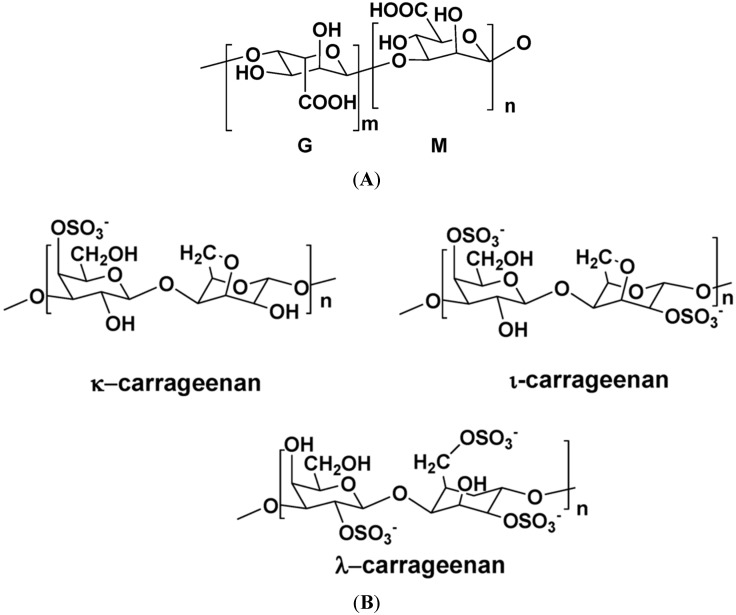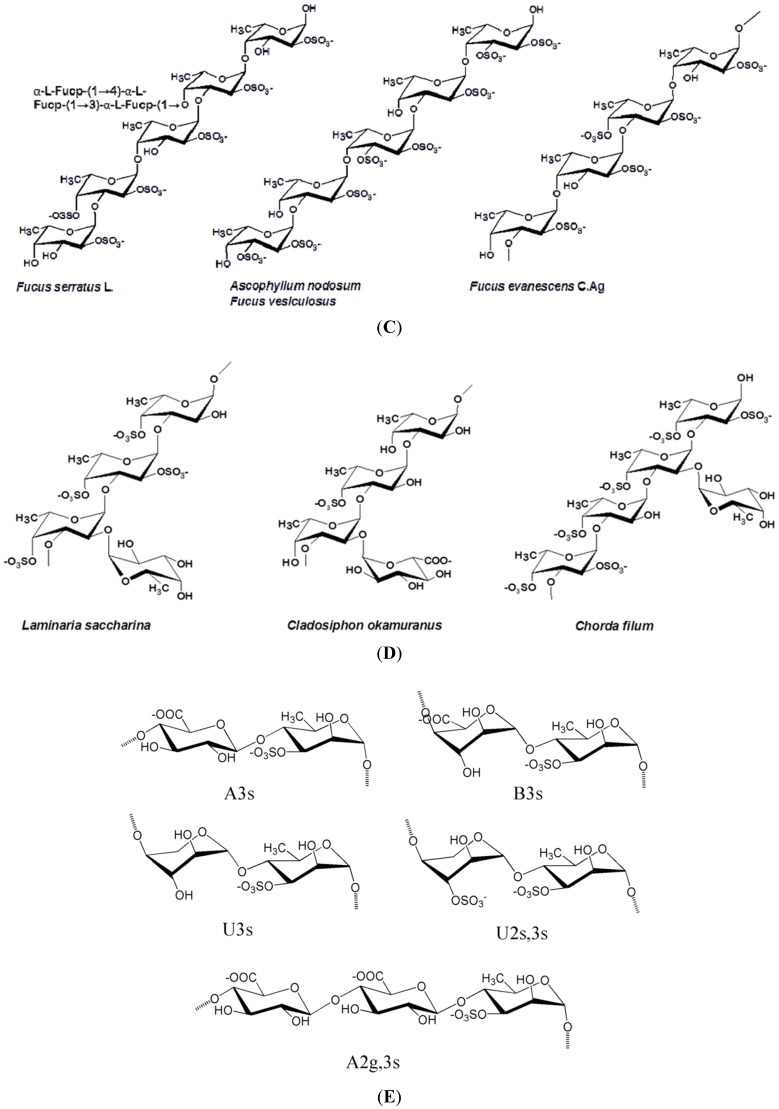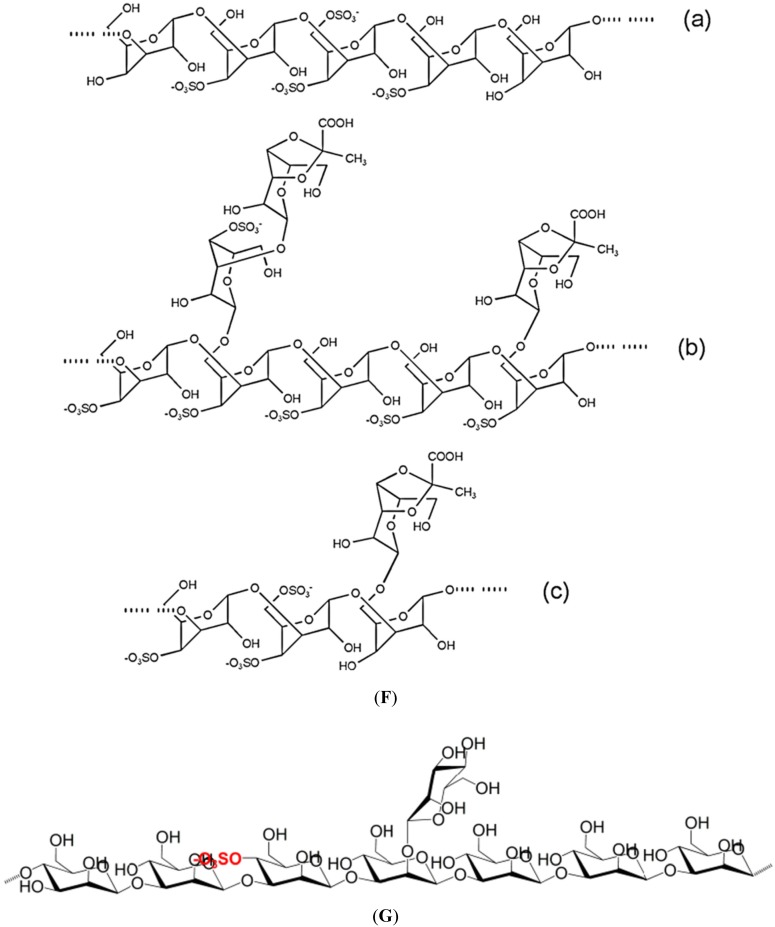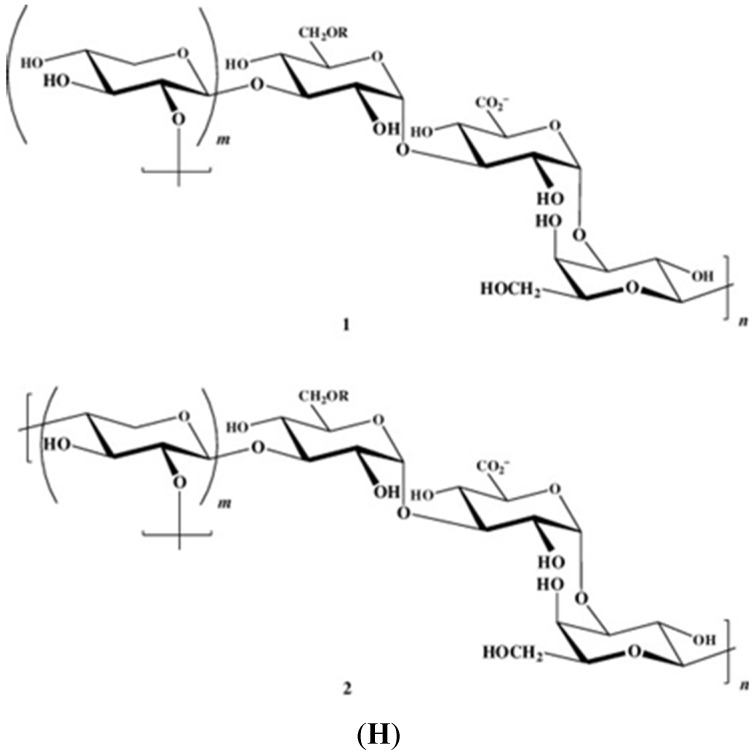Figure 1.
Examples of structures of PS from macro- and microalgae. (A) Repeating units suggested for the structure of alginates [3]; (B) Repeating units of some carrageenans [3]; (C) Fucoidan backbone of A. nodosum and three species of Fucus, showing the different distribution pattern of sulphate [75]; (D) Repeating units, sulphation pattern and gycosidic bounds of the backbone structures of PS of three different brown seaweeds [75]; (E) Alternative positions and combinations for the repeating units of ulvans. A3s and B3s are aldobiouronic repeating di-units suggested for U. rigida and U. armoricana. U3s and U2s,3s are, respectively, a xyl-(S-rham) and a (S-xyl)-(S-rham) disaccharides [8]; (F) Galactans of Codium spp. (a) linear (1,3)-β-d-galactan, (b) and (c) pyruvylated branched sulphated galactans [8]; (G) A rare mannan of the PS from C. fragile, with (1,3)-β-man residues and branches at C-2 [8]. Tabarsa et al. [243] referred that either branches or sulphates may be bound at the C-2 and/or C-4 positions along the PS backbone); (H) Models 1 or 2 for the possible acidic repeating unit in polysaccharide II, from Porphyridium sp. R = H, SO2O, terminal gal or terminal xyl, m = 2 or 3 [14].




